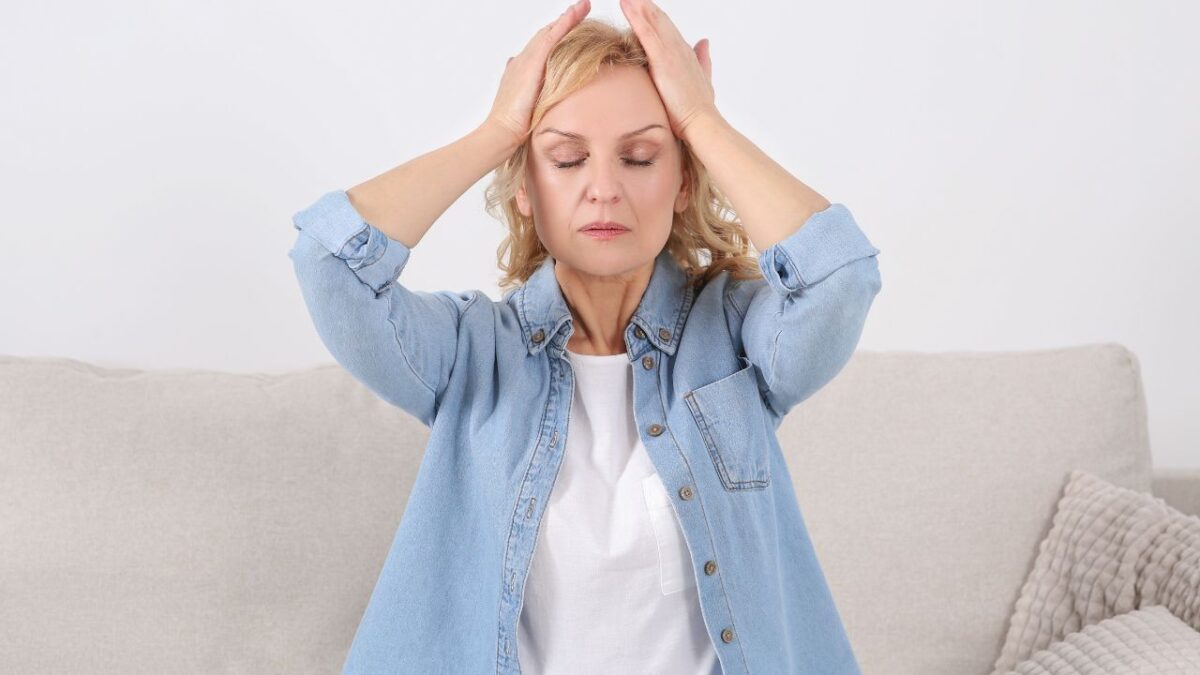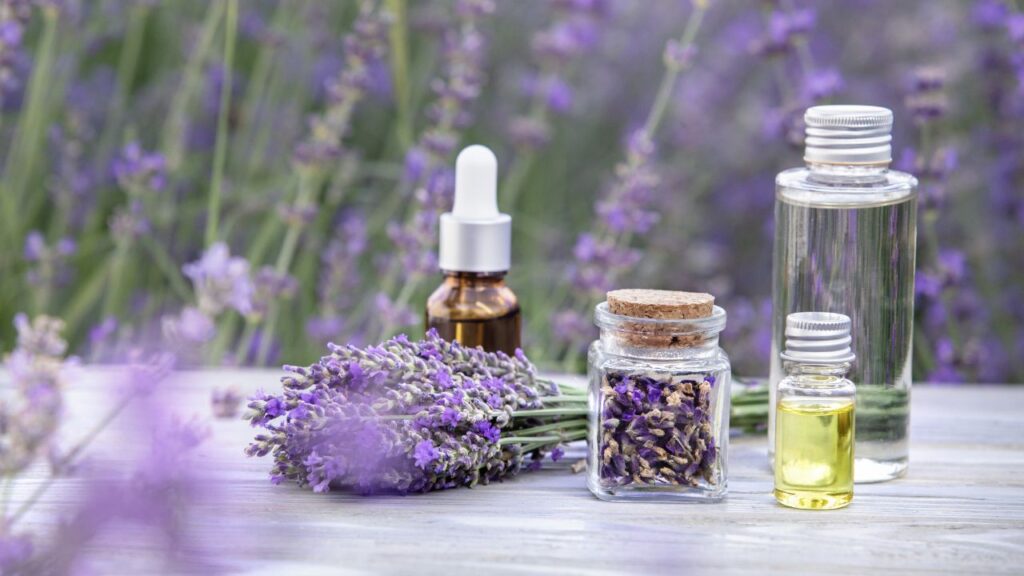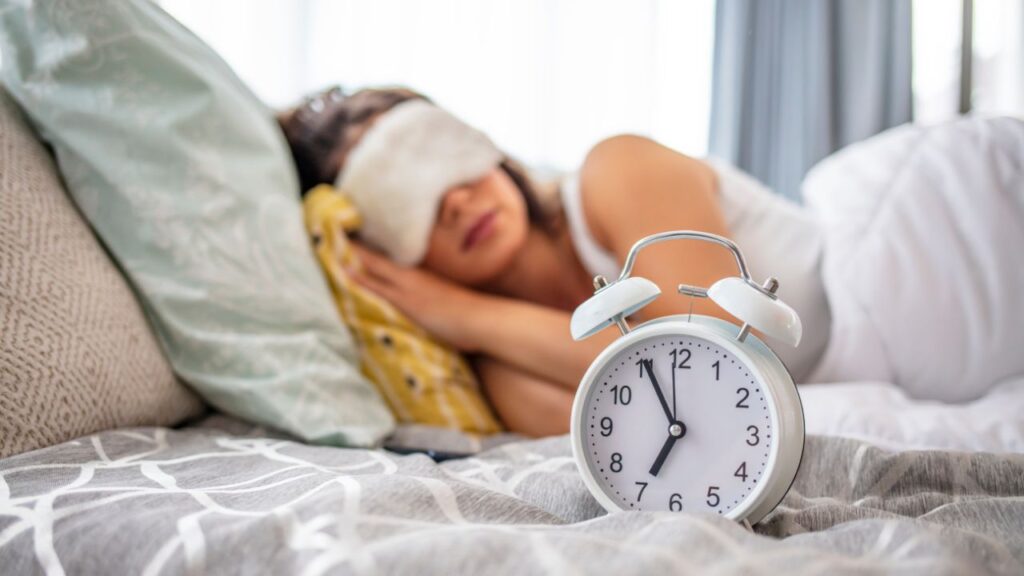Say Goodbye to Menopause Migraines: 6 Surprising Tricks You Haven’t Tried Yet!

Menopause can bring about significant changes in a woman’s body, and for some, this includes an increase in the frequency and severity of migraines. These aren’t just ordinary headaches; they’re often intense, debilitating, and can significantly impact daily life. While hormonal fluctuations are largely to blame, the good news is that there are several innovative strategies beyond traditional medication that can help manage or even alleviate these symptoms. In this blog, we dive into a treasure trove of lesser-known remedies that promise relief. From the calming aroma of lavender oil to the sleep-regulating benefits of a consistent bedtime, each tip offers a fresh perspective on tackling menopause migraines head-on. Whether you’re looking for natural alternatives or additional tools to complement your current management plan, this post is your guide to more pain-free days ahead.
1- Leverage Lavender Oil

Lavender oil, known for its calming and sedative properties, has been used traditionally to alleviate various ailments, including migraines. Its effectiveness is attributed to the presence of linalool and linalyl acetate, compounds known for their analgesic and anti-inflammatory properties. A study published in the European Neurology Journal found that inhalation of lavender essential oil may significantly reduce the severity of migraine headaches. Participants in the study inhaled lavender oil for 15 minutes during a migraine episode, and a notable percentage reported a decrease in the severity of their migraine symptoms compared to the control group.
How to Use Lavender Oil for Migraines:
- Aromatherapy Diffusion: Add a few drops of lavender oil to a diffuser filled with water. Inhale the mist to help ease migraine symptoms. This method is especially beneficial when used in a relaxed setting, aiding in stress reduction.
- Direct Inhalation: Place 2-3 drops of lavender oil on a cotton ball or handkerchief. Inhale deeply for a few minutes. This method is convenient for immediate relief, especially when on the go.
- Topical Application: Mix lavender oil with a carrier oil (such as coconut or almond oil) at a 1:5 ratio. Gently massage onto the temples, forehead, and back of the neck. This application method can provide direct relief to areas commonly affected by migraine pain.
- Lavender Oil Bath: Add a few drops of lavender oil to a warm bath. The combined effects of warm water and lavender aroma can help relax tense muscles and alleviate migraine symptoms.
Safety and Considerations: While lavender oil is generally safe for most individuals, it’s crucial to conduct a patch test before topical application to rule out any allergic reactions. Additionally, pregnant or breastfeeding women should consult a healthcare provider before using lavender oil.
2 – Incorporate Magnesium-Rich Foods

Magnesium, an essential mineral, plays a crucial role in various bodily functions, including nerve transmission and the regulation of blood vessel constriction, both of which are relevant to migraine occurrence. Its importance in migraine prevention is especially relevant for menopausal women, who may experience changes in migraine patterns due to hormonal fluctuations.
Research indicates a strong link between magnesium deficiency and an increased frequency of migraines. For instance, a study published in the Journal of Headache and Pain suggests that magnesium supplementation can significantly reduce the frequency and severity of migraines. This is because magnesium can block certain brain signals that lead to vascular changes causing migraines, and it can also stabilize blood vessel walls.
Another study in Headache: The Journal of Head and Face Pain highlights that magnesium levels affect serotonin receptors, nitric oxide synthesis and release, inflammatory mediators, and various other migraine-related pathways in the brain. These findings support the use of magnesium in both the prevention and acute treatment of migraine headaches.
Magnesium-Rich Foods: Incorporating magnesium-rich foods into your diet is a practical approach to potentially reduce the incidence of menopause-related migraines. Here are some excellent sources of magnesium:
- Spinach: A powerhouse of nutrients, spinach is also rich in magnesium. A cup of cooked spinach contains about 157 mg of magnesium, making it one of the best vegetable sources of this mineral.
- Almonds: Just a small handful of almonds (about 1 ounce) offers 76 mg of magnesium, alongside healthy fats and vitamin E.
- Bananas: Known for their potassium content, bananas also provide a good amount of magnesium. One medium-sized banana contains around 32 mg of magnesium.
- Black Beans: A cup of cooked black beans contains about 120 mg of magnesium, plus they’re an excellent source of protein and fiber.
- Pumpkin Seeds: Snacking on pumpkin seeds is an easy way to boost your magnesium intake, with a one-ounce serving offering about 156 mg.
- Whole Grains: Foods like whole wheat bread, quinoa, and brown rice are good sources of magnesium. For example, one cup of cooked quinoa provides about 118 mg.
- Dark Chocolate: Besides being a delicious treat, dark chocolate is surprisingly high in magnesium, with one ounce providing around 64 mg.
Incorporating Magnesium-Rich Foods: To effectively increase your magnesium intake, consider incorporating these foods into your daily meals and snacks. For example, start your day with a spinach and cheese omelet, snack on almonds or pumpkin seeds, include quinoa or black beans in your lunch and dinner, and enjoy a piece of dark chocolate as a treat.
Note on Supplementation: While dietary sources are the best way to increase magnesium intake, supplements may be beneficial for some individuals, especially those with diagnosed deficiencies. It’s important to consult with a healthcare provider before starting any supplementation, as excessive magnesium can lead to adverse effects.
3 – Stay Hydrated with Infused Water

Hydration plays a vital role in overall health, particularly in the prevention and management of migraines. During menopause, hormonal changes can affect the body’s hydration status, making adequate fluid intake even more essential. Dehydration is a well-known migraine trigger, as it can lead to the narrowing of blood vessels in the brain, which in turn can cause headache pain.
Research underscores the importance of hydration in reducing migraine severity. A study highlighted in the Journal of Headache and Pain points out that dehydration can lead to changes in brain volume, which might contribute to migraine headaches. Furthermore, maintaining optimal hydration is recommended as part of lifestyle modifications for migraine sufferers, according to guidelines from the American Migraine Foundation.
The Role of Infused Water: Infused water, also known as detox water, is a refreshing and flavorful way to increase your water intake. By adding fruits, vegetables, and herbs to water, you not only enhance its taste but also imbibe additional nutrients and antioxidants, which can be beneficial for overall health and potentially aid in migraine prevention.
Examples of Infused Water Combinations:
- Cucumber and Mint: Known for its cooling and soothing properties, cucumber, combined with the refreshing taste of mint, makes for a hydrating and migraine-soothing drink.
- Strawberry and Basil: Strawberries add a burst of vitamin C and antioxidants, while basil contributes anti-inflammatory properties, which can help in managing migraine symptoms.
- Lemon and Ginger: Lemon provides vitamin C and aids digestion, whereas ginger is renowned for its anti-inflammatory and nausea-relieving effects, which can be particularly helpful for those experiencing migraine with aura.
- Orange and Blueberry: Oranges are high in potassium, which can help maintain electrolyte balance, while blueberries are packed with antioxidants, offering a delicious and healthful infusion.
How to Make Infused Water:
- Choose Your Ingredients: Pick fresh fruits, vegetables, and herbs based on your preferences and their health benefits.
- Prepare the Ingredients: Wash and slice your chosen ingredients. For herbs, a light muddle can help release their flavors.
- Combine and Infuse: Add the prepared ingredients to a pitcher or water bottle filled with water. Let the mixture infuse for at least an hour, or for more pronounced flavors, refrigerate overnight.
- Enjoy: Drink the infused water throughout the day to stay hydrated and potentially reduce migraine occurrences.
Benefits of Staying Hydrated: Beyond migraine management, proper hydration supports various bodily functions, including temperature regulation, joint lubrication, and the removal of waste through urination, perspiration, and bowel movements.
For those navigating menopause and seeking natural methods to manage migraine symptoms, experimenting with different infused water recipes can be a delightful and beneficial practice. However, while hydration is crucial, it’s one part of a comprehensive approach to managing migraines, which should also include consultation with healthcare professionals for personalized advice and treatment options.
4 – Practice Acupressure

Acupressure, rooted in traditional Chinese medicine, operates on the principle that the body is interconnected through pathways called meridians, which can influence various physical conditions, including migraines. By applying pressure to specific points on the body, acupressure aims to restore balance and alleviate symptoms. For women experiencing migraines as part of menopausal changes, acupressure offers a non-invasive and self-administered form of relief.
Research supports the efficacy of acupressure for migraine relief. A study published in the American Journal of Chinese Medicine demonstrated that acupressure could reduce the intensity and frequency of migraines in participants by enhancing blood circulation and relieving muscle tension. This suggests that acupressure could be a valuable complementary therapy for those seeking natural migraine management methods.
Key Acupressure Points for Migraine Relief:
- LI4 (Hegu): Located between the thumb and index finger on both hands, applying pressure to this point can help relieve headache pain and tension.
- GB20 (Feng Chi): Found at the base of the skull where the neck muscles attach, massaging this area can reduce the intensity of headaches, especially those related to tension.
- LV3 (Tai Chong): Situated on the foot, about two finger widths above the place where the skin of the big toe and the next toe join. Stimulating this point can help alleviate headaches and stress, which are common during menopause.
How to Apply Acupressure:
- Locate the Point: Using a diagram or guide, identify the acupressure point you wish to stimulate.
- Apply Pressure: Use your finger or thumb to apply firm but gentle pressure to the point. The pressure should be strong enough to feel a sense of release but not so intense as to cause discomfort.
- Massage in Circular Motions: While maintaining pressure, gently massage the point in small circular motions for 2-3 minutes.
- Breathe Deeply: Focus on taking deep, slow breaths while applying acupressure. This enhances relaxation and the effectiveness of the treatment.
- Repeat on Both Sides of the Body: For points that exist on both sides of the body, such as LI4 and GB20, repeat the process on the opposite side.
Considerations and Safety: While acupressure is generally safe, it’s important to approach it with caution, especially for individuals who are pregnant, as certain points can stimulate uterine contractions. It’s advisable to consult with a healthcare professional or a trained acupressurist before beginning an acupressure regimen.
Acupressure presents a promising and accessible method for managing migraines, particularly for those undergoing menopausal changes. By incorporating acupressure into their routine, individuals can harness the body’s natural healing mechanisms to mitigate migraine symptoms, promoting a sense of well-being and balance. As with any complementary therapy, it’s beneficial to use acupressure as part of a holistic approach to migraine management, alongside medical advice and other lifestyle adjustments.
5 – Explore Herbal Teas

Herbal teas have been used for centuries to alleviate various ailments, including migraines. Their natural properties can help reduce inflammation, ease pain, and relax the nervous system, making them an excellent choice for women experiencing migraines during menopause. Let’s look at the science behind this and highlight some specific teas known for their migraine-relieving potential.
Studies have shown that certain herbs can play a significant role in reducing migraine symptoms. For instance, a study in Phytotherapy Research highlighted the effectiveness of ginger in treating migraines, noting its ability to inhibit prostaglandin synthesis, a process involved in inflammation. Similarly, research published in the Journal of Ethnopharmacology found that peppermint oil has significant analgesic and anti-inflammatory effects, useful in the treatment of tension headaches and migraines.
Beneficial Herbal Teas for Migraine Relief:
- Ginger Tea:
- Why It Helps: Ginger is renowned for its anti-inflammatory properties and its ability to reduce nausea, a common migraine symptom.
- Brewing Tips: Steep 1-2 teaspoons of fresh grated ginger in boiling water for 10-15 minutes. You can add honey for sweetness and lemon for extra vitamin C.
- Peppermint Tea:
- Why It Helps: Peppermint has a soothing effect on the body and mind, helping to relax the muscles and ease pain. Its menthol component is particularly beneficial for relieving headaches.
- Brewing Tips: Use one tablespoon of fresh peppermint leaves (or a teabag) per cup of boiling water. Steep for 5-10 minutes depending on desired strength.
- Chamomile Tea:
- Why It Helps: Known for its calming effects, chamomile can help reduce stress, a common trigger of migraines. It also has anti-inflammatory properties.
- Brewing Tips: Steep a chamomile tea bag or 1-2 teaspoons of dried chamomile flowers in boiling water for about 5 minutes.
- Feverfew Tea:
- Why It Helps: Feverfew has been studied for its potential in preventing migraines. It’s thought to reduce inflammation and prevent blood vessel constriction.
- Brewing Tips: Because of its bitter taste, mix feverfew leaves with other teas like peppermint or chamomile. Use about 1 teaspoon of dried leaves per cup of boiling water and steep for 5-10 minutes.
- Butterbur Tea:
- Why It Helps: Butterbur is another herb studied for migraine prevention, believed to act as a beta blocker, which normalizes blood flow to the brain.
- Note: Due to concerns about liver toxicity, only products labeled as PA-free should be used, and consultation with a healthcare provider is recommended before starting.
Making herbal teas a part of your daily routine can provide not just immediate relief from migraine symptoms but also long-term benefits in managing migraine frequency. It’s recommended to drink herbal tea early in the day or at the first sign of migraine symptoms for maximum effectiveness. By understanding the properties of these teas and how to prepare them, you can harness their benefits and enjoy a more natural approach to migraine relief. As always, consult with a healthcare professional before introducing new herbal remedies into your routine, especially if you are on medication or have underlying health conditions.
6 – Adopt a Regular Sleeping Schedule

Sleep and migraine have a complex, bidirectional relationship: poor sleep can trigger migraines, and migraines can in turn make it harder to get a good night’s sleep. During menopause, fluctuations in hormone levels, particularly estrogen, can exacerbate this cycle, affecting sleep quality and migraine frequency.
Improving sleep quality can have a significant positive effect on migraine management. Better sleep not only reduces the frequency of migraines but can also lessen their severity, improving overall quality of life. Additionally, during menopause, when sleep patterns may be more prone to disruption, prioritizing sleep hygiene becomes even more crucial.
Strategies for Maintaining a Regular Sleeping Schedule:
- Establish a Consistent Bedtime and Wake-up Time:
- Keeping a consistent sleep schedule, even on weekends, helps regulate your body’s internal clock, reducing the likelihood of sleep-induced migraines.
- Create a Relaxing Bedtime Routine:
- Engage in calming activities before bed, such as reading, taking a warm bath, or practicing relaxation techniques like meditation, to signal to your body that it’s time to wind down.
- Optimize Your Sleep Environment:
- Ensure your bedroom is conducive to sleep: keep it cool, dark, and quiet. Consider using blackout curtains, white noise machines, or earplugs to create a more comfortable sleep setting.
- Limit Exposure to Screens Before Bed:
- The blue light emitted by phones, tablets, and computers can interfere with your body’s ability to produce melatonin, a hormone that regulates sleep. Try to avoid screens at least an hour before bedtime.
- Watch Your Diet:
- Avoid caffeine and heavy meals close to bedtime, as they can disrupt sleep. Opt for a light snack if you’re hungry before bed.
- Exercise Regularly:
- Regular physical activity can help you fall asleep faster and enjoy deeper sleep. However, avoid exercising too close to bedtime, as it may keep you awake.
- Manage Stress:
- High levels of stress can affect your sleep quality and trigger migraines. Incorporate stress-reduction techniques such as yoga, deep breathing, or journaling into your daily routine.
Adopting a regular sleeping schedule and practices that enhance sleep quality can be a powerful tool in the arsenal against menopause-related migraines. By recognizing the critical role sleep plays in migraine prevention and taking steps to improve sleep habits, individuals can better manage their symptoms and navigate the challenges of menopause with greater ease. Remember, if sleep disturbances persist, consulting a healthcare provider can provide additional insights and tailored solutions.
Incorporating these strategies into your routine can offer relief from menopause-related migraines, allowing you to navigate this transitional phase with greater ease. Remember, it’s important to consult with a healthcare provider before trying new treatments, especially if you have underlying health conditions or are taking medication.
We hope you found our exploration of innovative strategies for managing menopause-related migraines informative and empowering. Whether it’s the calming effect of lavender oil, the nutritional boost from magnesium-rich foods, the refreshing simplicity of infused water, the targeted relief through acupressure, the soothing brews of herbal teas, the restorative power of a regular sleep schedule, or the cutting-edge approach of biofeedback therapy, we believe these tips can serve as valuable tools in your journey toward better health and well-being during menopause.
Your experiences, questions, and insights are incredibly valuable to us and to our community. If you have tried any of these methods, have additional tips to share, or questions about how to implement these strategies in your daily life, please don’t hesitate to leave a comment below. We’re here to learn from each other and to support one another through the challenges and triumphs of menopause.
Moreover, if you know someone who could benefit from the information shared in this blog, we encourage you to spread the knowledge by sharing this post. Together, we can build a community of empowerment and wellness, helping each other navigate the complexities of menopause with grace and strength.
Thank you for reading, and we look forward to your contributions to the conversation!
